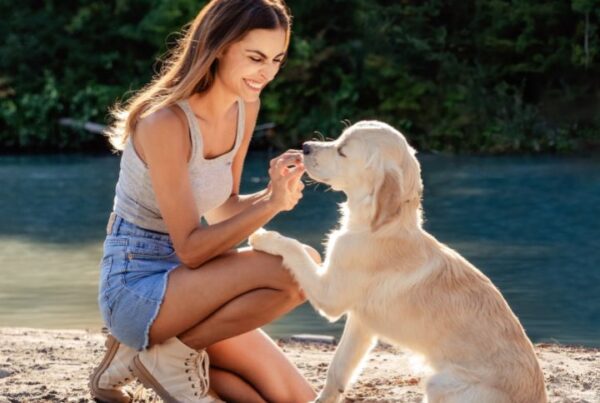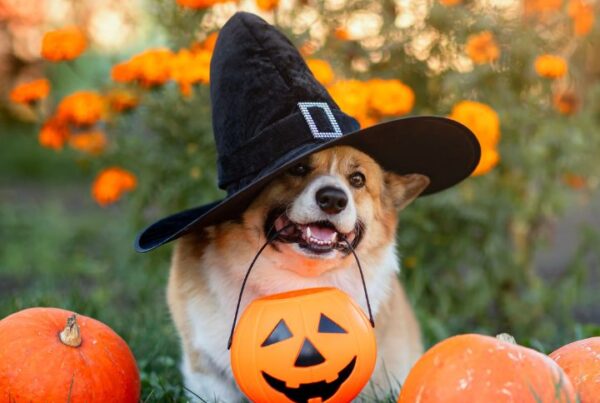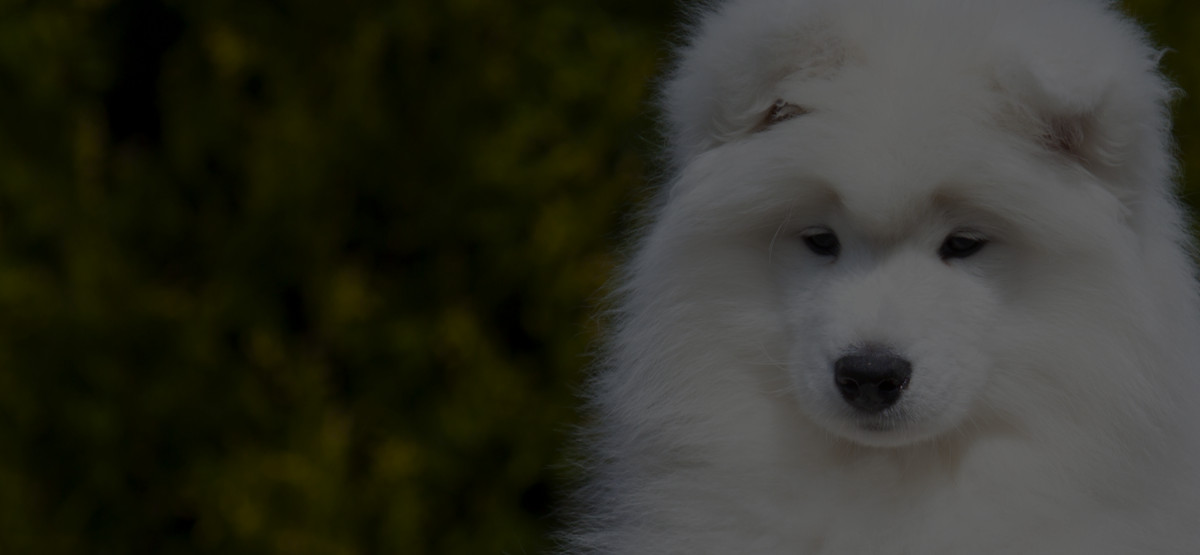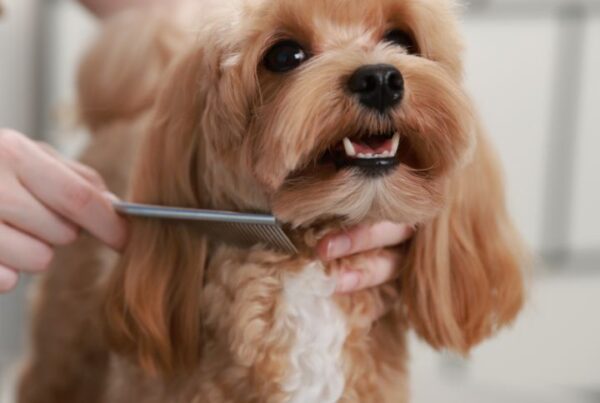Dog groomers spend a lot of their time brushing and combing a dog’s coat before beginning any other tasks. It’s important to have a smooth and even coat before you start lathering up the shampoo. Without a proper brushing, you risk making tangles worse for each pup!
So what are the best techniques for brushing a dog? This really depends on the coat and fur type, but there is a general pattern of how to go about your brushing routines…
Find out how brushing can make your grooming appointments run easier for both you and your furry clients!
Why do you brush?
Similar to humans, brushing will help keep a dog’s fur coat soft and silky. It removes and prevents tangles that can be painful for the dog, and helps to keep his coat healthy. It’s important for both owners and groomers to put time into brushing a dog thoroughly and carefully. You want to make sure your pal’s coat is feeling its best!

When do you brush?
Brushing should be done every week or two, depending on a dog’s coat. For owners, a good dog groomer can guide you on how often brushing is needed. Long-haired pets require more maintenance in terms of brushing, but even just a few minutes each week can prevent uncomfortable mats and tangles!
For groomers, brushing should be the first thing you do when a furry client comes through the door. Running your hands through the coat can determine if there are any problem areas. Brushing a dog’s coat makes it easier for you to complete the rest of the grooming process.
Think about bathing: if you try to bathe a dog without brushing out his coat beforehand, you’re likely to come into contact with some tangles (which are harder to deal with when wet!). Plus, you don’t want to snag a knot in a dog’s coat when he’s in the bath – he’ll likely move or react in a way that makes it difficult to keep him still. Even more likely is you getting soaked by a surprised pup! So be sure you brush all the way through the coat before you start any other grooming task.
How do you brush?
When it comes to brushing, you have to take the coat type and length into consideration. Don’t worry – you learn all about breed standards and coat types in your dog grooming course! Once you know which brush you need to use, you can decide on the best method for each individual dog.

Pat and Pull
The pat and pull method of brushing is the safest for dog groomers to use – it avoids touching a dog’s skin so there’s no scratching or scraping. The idea here is that you pat the fur down with your brush so your bristles can reach the undercoat. Then you would brush through the coat carefully to get through all of the fur.
However, there is more to this technique – the type of brush you’re using depends on each dog’s coat. Longer and thicker fur calls for a different brush than short-haired fur. It’s extremely important to use the correct brush or you could cause harm to your furry friend!
Pro Tip: Keep your dog training course books handy if you ever need a quick refresher.
Combing
Combing is an excellent way to double-check that you’ve brushed through the entire coat. Combing the fur will show you any areas that need some extra attention. Since combs are thinner than brushes, they’ll catch any tangles or difficult spots in the coat that your brush may have missed.
Your comb should be able to get through the entire coat without snagging any fur or finding any knots. If you do catch something, you need to spend a few more minutes with your brush in hand to make sure the coat is smoothed out.

Watch out for…
As always, groomers need to be vigilant when brushing and combing a dog’s fur. Since dogs aren’t able to voice their feelings like humans, you need to watch for reactions and use your dog grooming knowledge to feel around for problem areas. Going through the coat slowly but surely is the best way to avoid these issues.
Matting
An all- too-common problem in a dog’s coat is matting. Some dogs are more prone to matting, so brushing more often will help prevent them from forming. Longer and thicker coats are more likely to cause matting – be sure to advise owners of this! Mats need to be taken care of quickly or they can lead to more pressing problems.
Preventative measures will help you as a groomer, as well as keep the dog healthy and comfortable in his fur. Spending a few extra minutes to check through the coat will make a huge difference for dogs that tend to form mats.
Friction
Brush bristles can be painful on both dogs and humans. Don’t put much pressure into the coat when brushing – this can lead to scrapes and uncomfortable friction! Working slowly through sections will help you keep your brush away from a dog’s skin to prevent any harm.

More than this, avoid over-brushing each section by creating a system. Start brushing in one area, count your brushes or use a similar timing method, and then move on to the next section of the coat. When you comb the dog after brushing, this will reveal any places that need more attention. Constant brushing in one area is a quick way to create friction and make grooming a painful experience for your pal.
Shedding
Some owners will complain about how much a dog sheds. As a groomer, you can’t completely stop the shedding but you can make it less noticeable!
De-shedding is a technique that requires special tools, like rakes and blades. Although de-shedding can help some dogs, there are certain coats that you should NOT use these tools on. Keep your brushing guide handy for when you have a client who schedules a de-shedding appointment – you can tell them right away what you can do to help!
When it comes to brushing your canine pals, it pays to be vigilant. Your dog grooming clients will be thankful that you are thorough in your work – this means a happier pup for them to take home! A slow and careful brush from the groomer helps create a bond between you and each dog. Take your time and don’t rush the brush!
Interested in learning more? Get professional techniques and know-how by taking a dog grooming course online!



